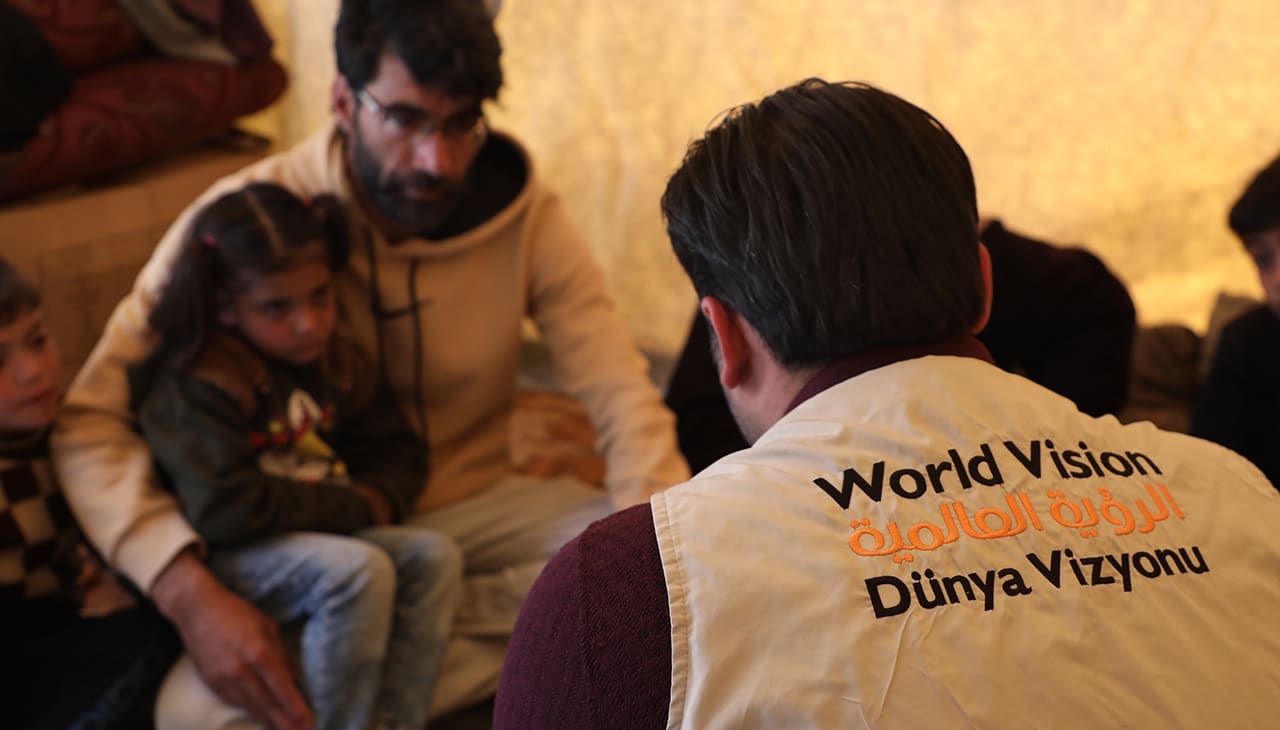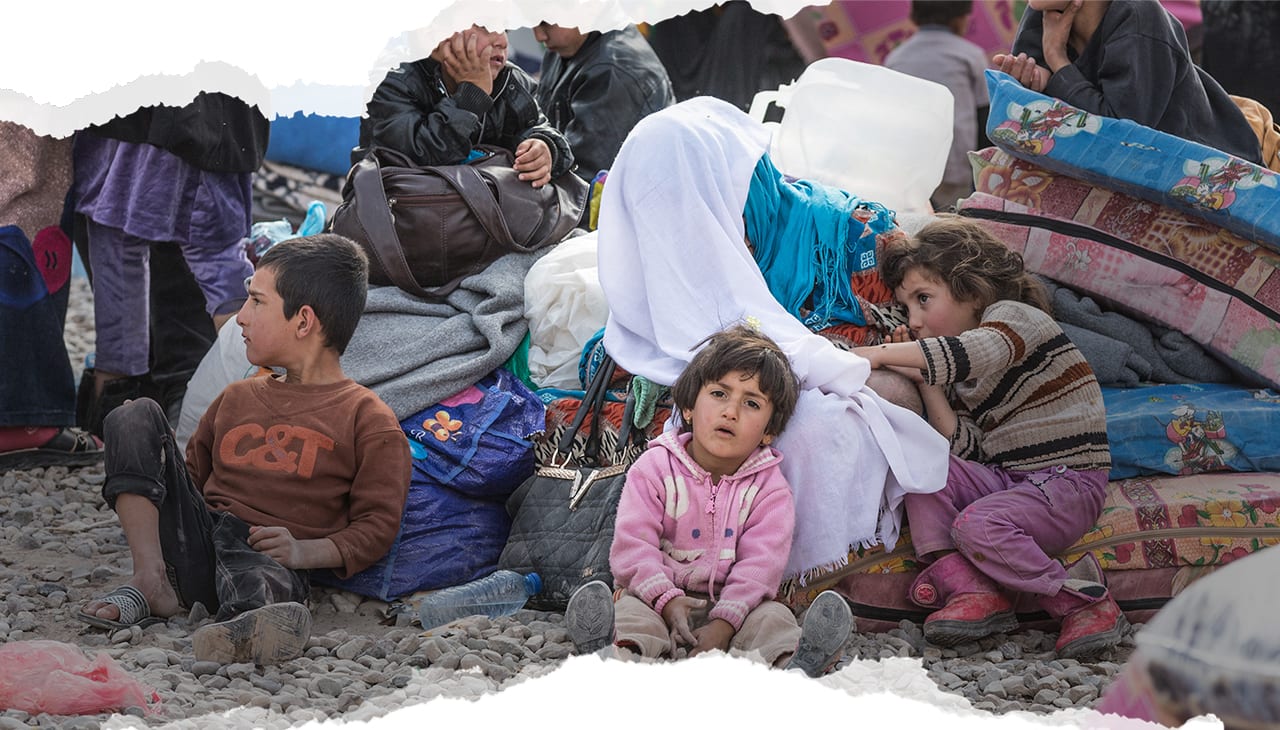CHILDHOOD RESCUE
Syria
Now in its 13th year, the Syrian conflict has led to more than 600,000 deaths and has displaced over 13 million people.
Give nowMost Syrian children only know a life of war and suffering.
Syrian children need your help. The brutal and violent conflict has been raging on in Syria for 13 years. Children have lost their homes, loved ones and everything familiar to them. Fleeing for their lives, children and families have become refugees, and millions more are trapped inside Syria. Crammed in camps without the basics to survive. A place to sleep, food, clean water and education.
In the midst of this crisis, Syria and Türkiye were hit by devastating earthquakes on February 6th, 2023, which added to already compounded humanitarian needs and vulnerabilities. World Vision’s Syria Response Director says “We have not seen suffering and devastation of this scale in over a decade.”
World Vision has helped more than 800,000 children and families in Türkiye and Syria thanks to our dedicated staff and supporters. However, there’s still so much more to be done. This earthquake will leave lasting scars and children and families will be impacted for many years to come.
We need your help to provide assistance to Syrian children and families

Children in Syria face challenges no child should have to face—missing out on school, working as child labourers and early marriage.
The war and earthquakes have forced more than half of Syria's population to flee their homes. With your help, World Vision has been responding since the conflict began, assisting children and families affected.
We’ve been working in Syria – as well as Lebanon, Jordan, Iraq, and Türkiye as part of the Syria crisis response since 2013. With the aim of providing humanitarian assistance to vulnerable Syrians and communities hosting Syrian refugees. Working alongside families, providing clean water, food, shelter, education, child protection, and psycho-social support.
Give to Childhood Rescue to protect vulnerable children in dangerous places like Syria.
A monthly gift of $20, will provide $120 worth of life-changing support to children whose lives are on the line, thanks to our partnerships with other organisations.
Syria's children are facing the most significant humanitarian crisis in living memory.
13,000
children have been killed since the war began twelve years ago.
4.8 million
Syrian children born since the war started have only ever known war.
50%
of children in Syria are out of school, and 80% of the population lives in poverty.
The earthquakes that resulted in irreversible damage and loss.

6 February is a day that will be engraved in Syrians memories for generations. Families were awoken by a deadly 7.8 magnitude earthquake. “During the earthquake, the situation was horrible, it felt like the end of the world” shares Yahya. The 40-year-old father is one of the Syrians who managed to escape the rubble with his family. unfortunately, almost 7,000 Syrians weren’t so lucky.
The family headed to a shelter with the clothes on their backs. They were among 86,000 people who were all displaced after their homes were destroyed.
This earthquake has affected an already severely devastated country, that has been witnessing war for the past 12 years.
“Boys and girls aged five or six can name every type of bomb by its sound, but sometimes can barely write their name having missed out on an education. We must stop the war before it is too late.”
- Johan Mooij, World Vision Syria Response Director.
An entire generation has been lost to this conflict.

13 years of war in Syria represents the greatest humanitarian failure of our time for every single child and is already at a breaking point.
"The world has stood by and allowed this conflict to rage on for a decade, robbing children of their basic rights and preventing an entire generation of girls and boys from reaching their potential," says Andrew Morley, World Vision International President & CEO.
Syrian children's life expectancy has decreased by 13 years since the war began.
The Syrian war has cost $1.2 trillion USD, but the real cost is the total and utter loss of missed school years, no medical care, forced child marriage, poverty and broken dreams.
Please help children in countries like Syria survive, recover and build a future.
A monthly gift of $20, will provide $120 worth of life-changing support to children whose lives are on the line, thanks to our partnerships with other organisations.
Syria's children are filled with love and hope for their country.
FAQs
Lebanon: World Vision’s response has helped 202,600 people, through running informal education to help children re-enter school, providing water, sanitation and hygiene in schools, creating child friendly spaces, and providing cash and food assistance to refugees.
Jordan: Some 188,316 people in Jordan have been able to settle into their changed lives, with a strong emphasis on child protection, schools, household financial support, and education opportunities. We have also been providing water, sanitation and hygiene infrastructure in camps, and alternative learning and psychosocial support for children of all backgrounds.
Syria: Over 852,000 people have been supported through sustainable water and sanitation solutions, psychosocial support for children, household and winter items, a new school and filling gaps in fractured health-care.
Turkey: World Vision helped 47,000 with protection across the border and non-formal education.
Iraq: Over 937,000 people in Iraq were supported with access health, water, hygiene, learning opportunities, with an emphasis on safe and food-secure living conditions.
There are at least 1,650,000 people in need of humanitarian assistance in north-east Syria. Humanitarian work assisting them is under threat from this latest fighting. Half a million people live close to the conflict zone, near the Turkish border, and are in great danger. Many of them have already been forced from their homes and could be displaced again as Syria’s war continues.
World Vision is urging parties to the conflict to protect civilians and facilitate safe access for aid agencies. The international community, including the UN Security Council, must urge restraint and facilitate continued vital humanitarian access.
In Lebanon, there are no official refugee camps. The 950,000 Syrian refugees make up about one-sixth of Lebanon’s population. Many live in primitive conditions in informal tent settlements, which are not official refugee camps. With few legal income opportunities, they struggle to afford residency fees, rent, utilities, and food.
There are 3.6 million Syrian refugees in Turkey. Approximately 90% of Syrian refugees in Turkey live outside of camps and have limited access to basic services.
The 250,000 Syrian refugees in Iraq are concentrated in the Kurdistan region in the north where more than a million Iraqis fled to escape ISIL. Most refugees are integrated into communities but the large number of newcomers puts a strain on services.
The most populace refugee camp in Jordan is Za’atari, close to the northern border with Syria. It is home to around 80,000 people. The camp is hot and dusty in summer and cold in winter, it is no place for children, despite the best efforts of authorities, the UN and humanitarian agencies. Some children are not in school and wander around refugee camps during the day and night, which leaves them very vulnerable.
Diseases and malnutrition: Children are susceptible to ailments brought on by poor sanitation, including diarrheal diseases like cholera. They may miss vaccinations and regular health checkups, especially in cut-off areas. In poor housing, cold weather increases the risk of pneumonia and other respiratory infections.
Child labor and child soldiers: Many refugee children have to work to support their families. Often they work in dangerous or demeaning circumstances for little pay. Warring parties forcibly recruit children who serve as fighters, human shields, and in support roles, according to the U.S. State Department’s Trafficking in Persons Report.
Child marriage and abuse: Children are more vulnerable to sexual abuse and exploitation in the unfamiliar and overcrowded conditions found in camps and informal tent settlements. Without adequate income to support their families and fearful of their daughters being molested, parents may opt to arrange a marriage for girls, some as young as 13.
Lack of education opportunities: Forty percent of Syrian refugee children are out of school. In Syria, the war reversed two decades of educational progress. One-third of schools are not having classes because they have been damaged, destroyed, or occupied by military groups or displaced people.
We ensure all resources entrusted to us are used effectively to bring maximum impact.
.jpg)
As part of an international partnership working in nearly 100 countries, World Vision New Zealand pursues the highest standards of stewardship and accountability.
In 2022, 84.4% of World Vision New Zealand's total operating expenses were used for international program support that benefited children, families and communities in need. Learn more.